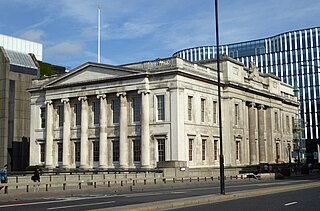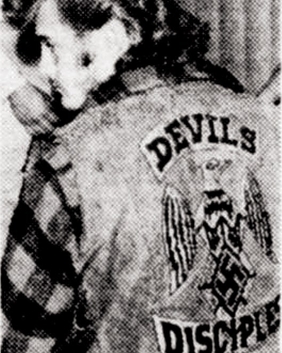Related Research Articles

Operation Flavius was a military operation in which three members of the Provisional Irish Republican Army (IRA) were shot dead by the British Special Air Service (SAS) in Gibraltar on 6 March 1988. The trio were believed to be planning a car bomb attack on British military personnel in Gibraltar. They were shot dead while leaving the territory, having parked a car. All three were found to be unarmed, and no bomb was discovered in the car, leading to accusations that the British government had conspired to murder them. An inquest in Gibraltar ruled that the authorities had acted lawfully but the European Court of Human Rights held that, although there had been no conspiracy, the planning and control of the operation was so flawed as to make the use of lethal force almost inevitable. The deaths were the first in a chain of violent events in a fourteen-day period. On 16 March, the funeral of the three IRA members was attacked, leaving three mourners dead. At the funeral of one, two British soldiers were killed after driving into the procession in error.

Richard Blass was a Canadian gangster and a multiple murderer. Born in Montreal, he was nicknamed Le Chat, French for The Cat, because of his luck in evading death after surviving at least three assassination attempts and a police shootout, and escaping from custody twice.

The Service de police de la Ville de Montréal is the municipal police agency for the city of Montreal, Quebec, Canada, and the neighbouring communities in the urban agglomeration of Montreal. With over 4,500 officers and more than 1,300 civilian staff, it is the second-largest municipal police agency in Canada after the Toronto Police Service.
In English law, Irish law and Northern Irish law, unlawful killing is a verdict that can be returned by an inquest in England and Wales and Ireland when someone has been killed by one or more unknown persons. The verdict means that the killing was done without lawful excuse and in breach of criminal law. This includes murder, manslaughter, infanticide and causing death by dangerous driving. A verdict of unlawful killing generally leads to a police investigation, with the aim of gathering sufficient evidence to identify, charge and prosecute those responsible.
The open verdict is an option open to a coroner's jury at an inquest in the legal system of England and Wales. The verdict means the jury confirms the death is suspicious, but is unable to reach any other verdicts open to them. Mortality studies consider it likely that the majority of open verdicts are recorded in cases of suicide where the intent of the deceased could not be proved, although the verdict is recorded in many other circumstances.

The Ballymurphy massacre was a series of incidents between 9 and 11 August 1971, in which the 1st Battalion, Parachute Regiment of the British Army killed eleven civilians in Ballymurphy, Belfast, Northern Ireland, as part of Operation Demetrius. The shootings were later referred to as Belfast's Bloody Sunday, a reference to the killing of civilians by the same battalion in Derry a few months later. The 1972 inquests had returned an open verdict on all of the killings, but a 2021 coroner's report found that all those killed had been innocent and that the killings were "without justification".

Mark Duggan, a 29-year-old black British man, was shot dead by police in Tottenham, North London on 4 August 2011. The Metropolitan Police stated that officers were attempting to arrest Duggan on suspicion of planning an attack and that he was in possession of a handgun. Duggan died from a gunshot wound to the chest. The circumstances of Duggan's death resulted in public protests in Tottenham, which led to conflict with police and escalated into riots across London and other English cities.
Michael Wayne McGray is a Canadian serial killer convicted of killing seven individuals between 1985 and 1998. He claims to have killed eleven others during the same time period.
The shooting of Fredy Alberto Villanueva occurred on August 9, 2008, in Montreal, Quebec, Canada. Villanueva, a Honduran immigrant, was shot and killed by a Montreal Police officer in the parking lot of Montreal-Nord's Henri-Bourassa Arena, near Rolland Boulevard and Pascal Street, just after 7:00 p.m. Two other men were injured in the shooting.

The Quebec City mosque shooting was an attack by a single gunman on the evening of January 29, 2017, at the Islamic Cultural Centre of Quebec City, a mosque in the Sainte-Foy neighbourhood of Quebec City, Canada. Six worshippers were killed and five others seriously injured after evening prayers when the gunman entered the prayer hall shortly before 8:00 pm and opened fire for about two minutes with a 9mm Glock pistol. Approximately 40 people were reported present at the time of the shooting.

The death of Helen Bailey is a British child murder case dating from 1975 in which an eight-year-old girl's death was originally classified by a coroner as being due to undetermined causes and potentially sourcing from an "accident or [a] practical joke gone wrong" despite the fact the child was found in a secluded area and that her jugular vein had been severed. The original verdict into Bailey's death was overturned and replaced with one of unlawful killing in 2019.

On 29 November 2019, five people were stabbed, two fatally, in Central London. The attacker, Usman Khan, had been released from prison in 2018 on licence after serving a sentence for terrorist offences.

The Devil's Disciples Motorcycle Club was a Canadian outlaw motorcycle club based in Greater Montreal. Originating in late 1965, the club achieved a short-lived prominence in Montreal and was, for a time, the most powerful motorcycle gang in the city before disbanding in January 1976 as a result of a biker war with the Popeyes, a rival outlaw biker club that would eventually become the first Hells Angels chapter in Canada. The Devil's Disciples gained additional infamy for their assassination attempt on famed French singer-songwriter Johnny Hallyday as well as an internal conflict amongst its members which led to several murders.

On 12 August 2021, a mass shooting occurred in Keyham, Plymouth, England. The gunman, 22-year-old Jake Davison from Plymouth, shot and killed five people and injured two others before fatally shooting himself. Devon and Cornwall Police have not identified a motive.
References
- ↑ "Ce 21 janvier 1975". Dépoussiéreuse de crimes (in French). 25 May 2019. Retrieved 30 March 2024.
- 1 2 3 4 "Incendie au bar Gargantua". Service de sécurité incendie de Montréal (in French). Retrieved 6 February 2024.
- 1 2 3 4 5 6 7 8 "Gargantua massacre: A Canadian horror story". The Daily Colonist. 22 January 1975. Retrieved 6 February 2024.
- 1 2 3 "Canadian Convict Slain". The New York Times. 26 January 1975. Retrieved 6 February 2024.
- 1 2 3 4 5 6 7 "POLICE IN MONTREAL THEORIZE ON DEATHS". The New York Times. 23 January 1975. Retrieved 6 February 2024.
- ↑ Venne, Jean-François (1 January 2018). "Le côté sombre de la métropole". La Presse+ (in French). Retrieved 10 February 2024.
- ↑ Lavigne, Yves (1994). Hell's Angels. Carol Pub. Group. p. 249. ISBN 978-0-8184-0514-3 . Retrieved 6 February 2024.
- 1 2 3 Auger, Michel (2002). The biker who shot me : recollections of a crime reporter. p. 72. ISBN 0771008775 . Retrieved 6 February 2024.
- 1 2 3 4 5 6 7 8 9 10 ""Weasel" killed by police trying to reach arsenal". Dixon Evening Telegraph. 24 January 1975. Retrieved 6 February 2024.
- 1 2 3 4 Borders, William (22 January 1975). "13 Killed in Montreal Bar, Apparently Gang Victims". The New York Times . Retrieved 6 February 2024.
- 1 2 3 4 5 "Montreal Mass Murderers Sought". Circleville Herald. 22 January 1975. Retrieved 6 February 2024.
- ↑ "High-profile cases of mass or multiple murders in Canada". The Globe and Mail . 9 April 2006. Retrieved 6 February 2024.
- 1 2 Lane & Gregg 2004, p. 131.
- 1 2 Lane & Gregg 2004, p. 132.
- ↑ Library, Toronto Star (23 April 2018). "A history of violence on Canadian soil". Toronto Star. Retrieved 10 February 2024.
- ↑ "Albert Lisacek, 1933-2012". Macleans.ca. 19 December 2012. Retrieved 6 February 2024.
- ↑ "Arson Suspect Killed in Canada". International Herald Tribune. 25–26 January 1975. Retrieved 6 February 2024.
- ↑ Solyom, Catherine (December 1, 2012). "Canada's toughest cop wrestled with a big secret". Montreal Gazette . Archived from the original on March 3, 2013. Retrieved December 2, 2012.
- ↑ Hustak, Alan (30 November 2012). "Montreal tough guy Albert Lisacek was a hard-boiled cop from a bygone era". The Globe and Mail . Retrieved 10 February 2024.
- ↑ "Gargantua murders termed an 'error'". The Daily Colonist. 4 February 1975. Retrieved 6 February 2024.
- 1 2 3 Kowch, Steve; Noel, Albert (6 February 1975). "Richard Blass linked to slayings". The Gazette. Retrieved 6 February 2024.
- ↑ "Witness cited in club deaths". The Daily Colonist. 6 February 1975. Retrieved 6 February 2024.
- 1 2 3 Collister, Eddie (14 March 1975). "'Death warrant' freedom granted Gargantua suspect". The Gazette. Retrieved 6 February 2024.
